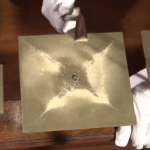People
Ernst Florens Friedrich Chladni
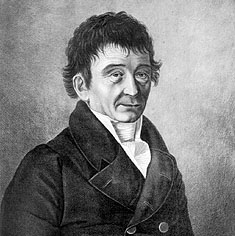
Objects in the Database
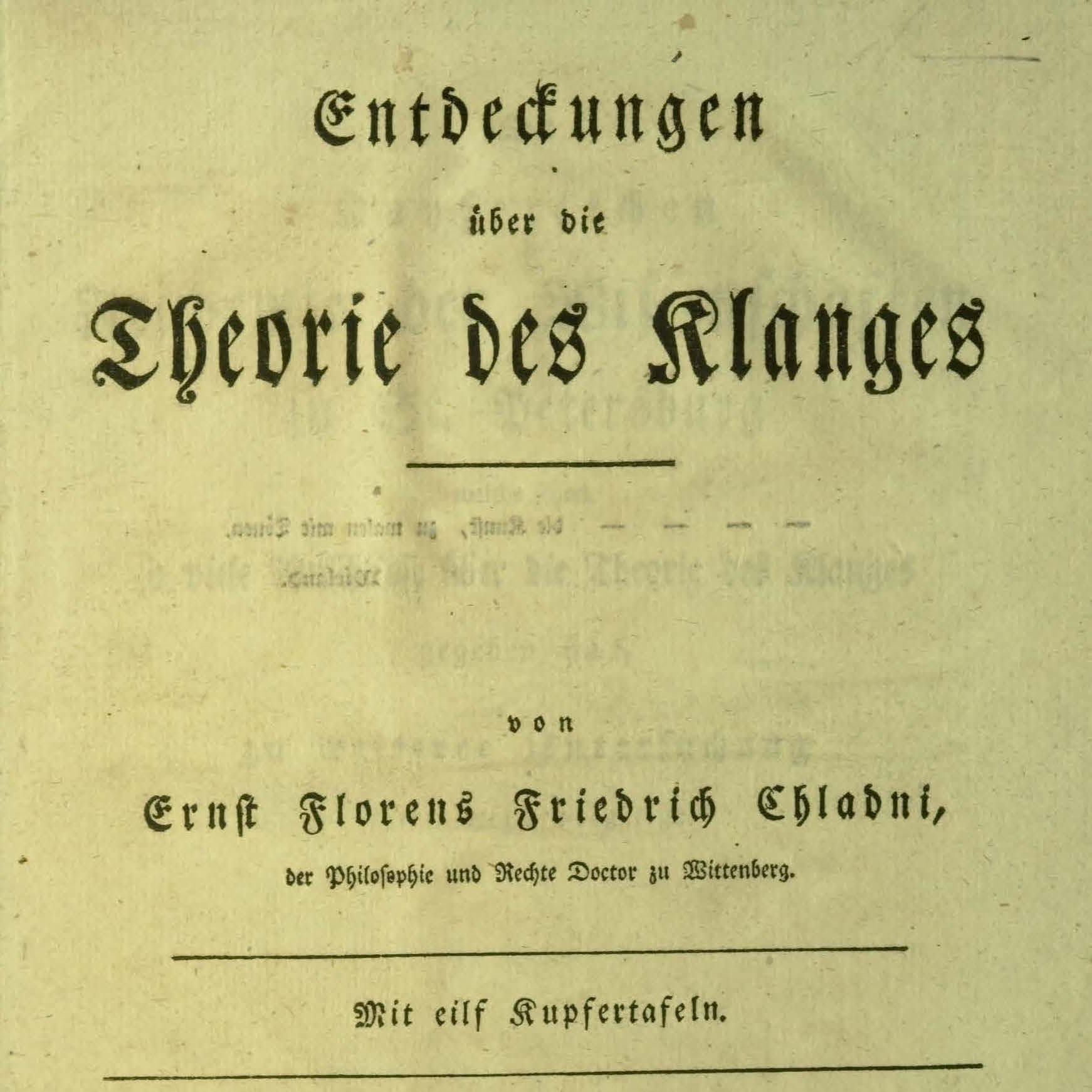
Entdeckungen über die Theorie des Klanges Texts
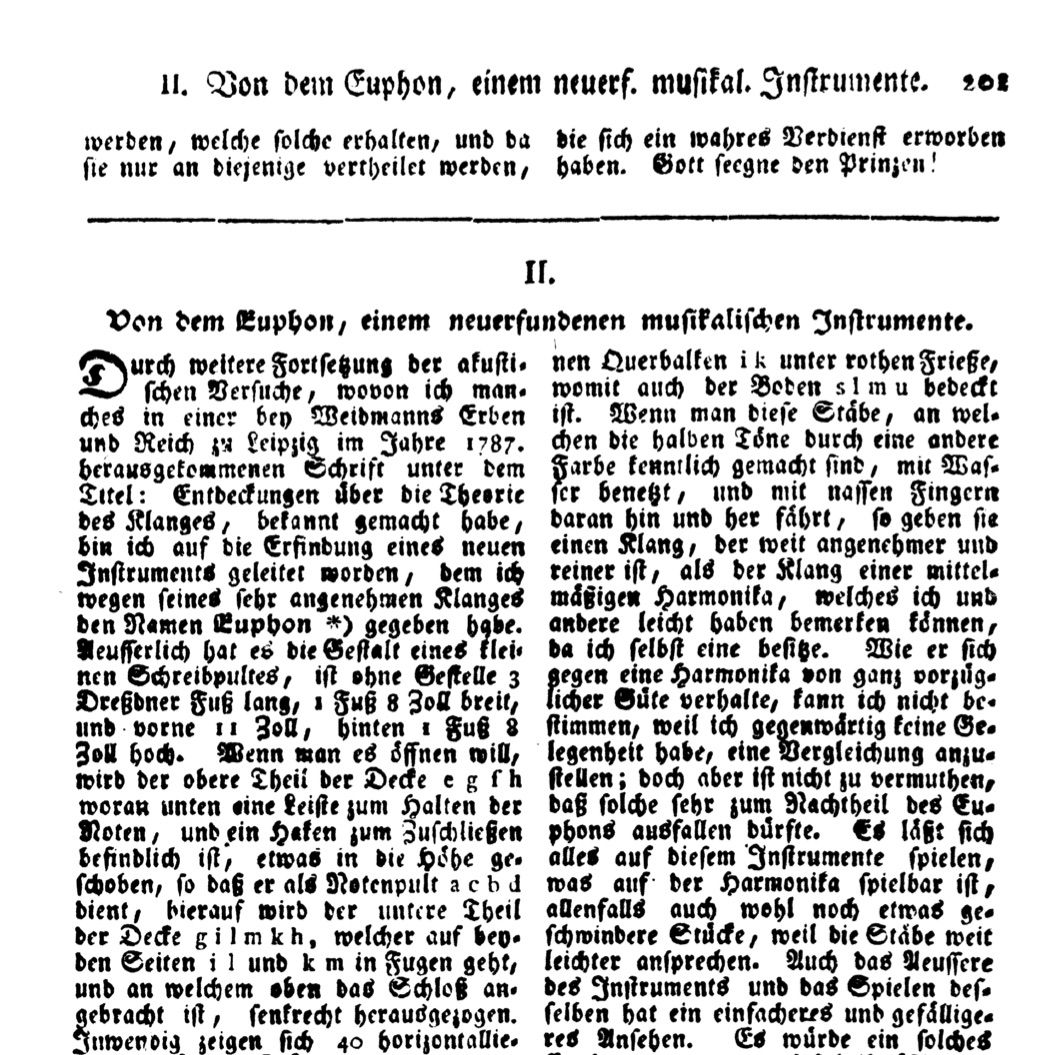
Von dem Euphon, einem neuerfundenen musikalischen Instrumente Texts
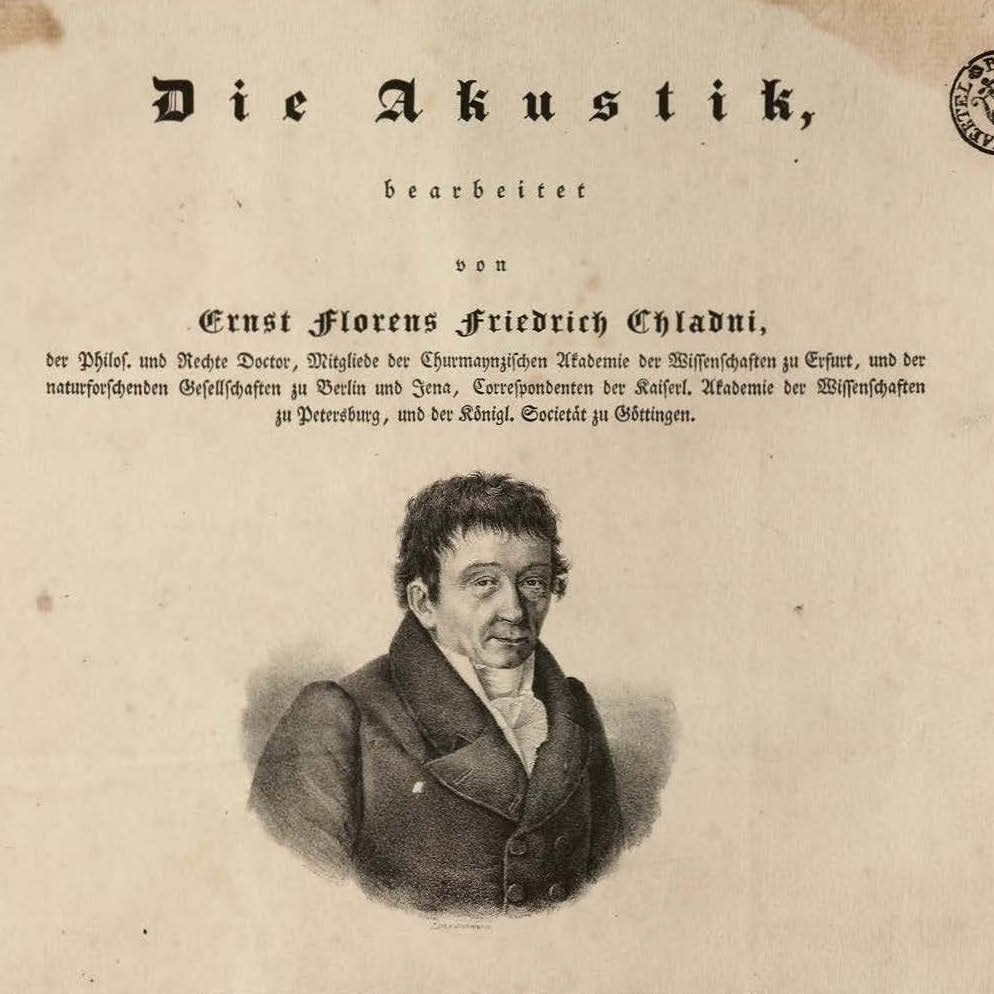
Die Akustik Texts
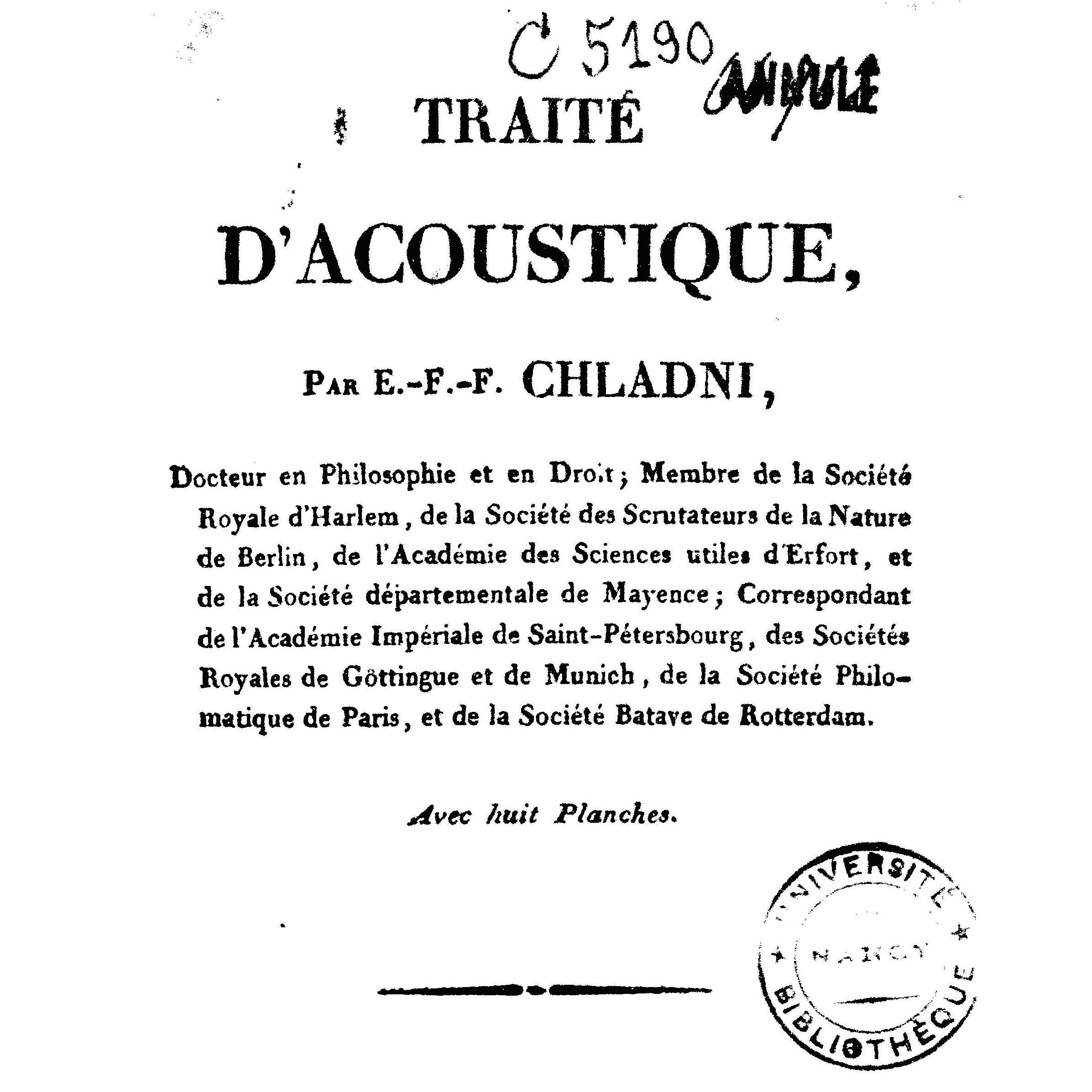
Traité d’acoustique Texts
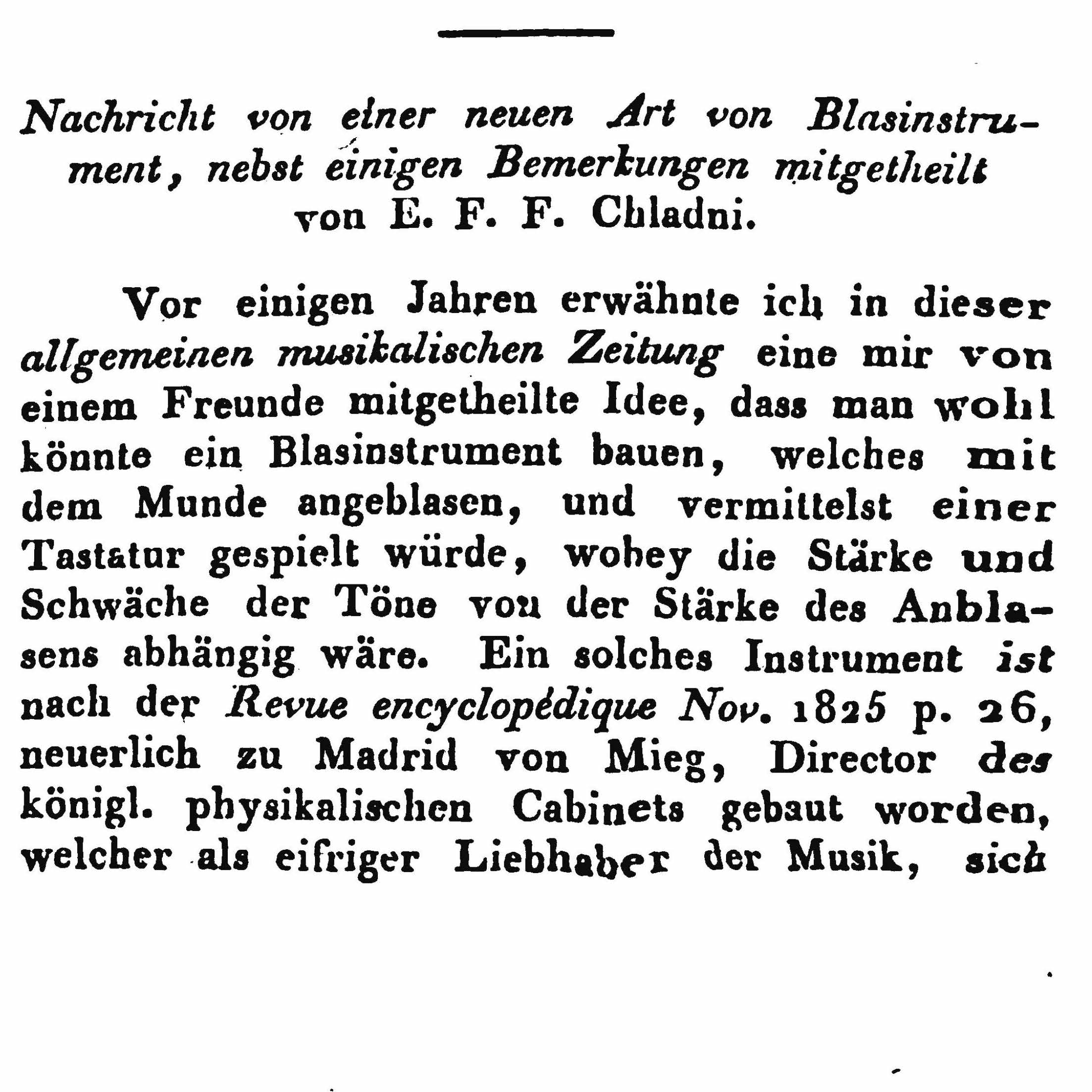
Nachricht von einer neuen Art von Blasinstrument Texts
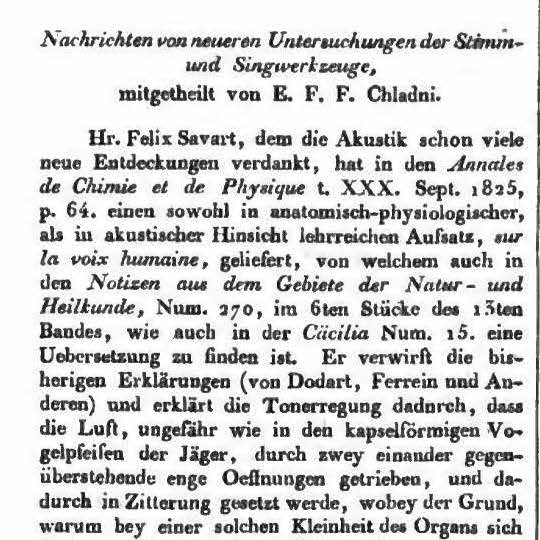
Nachrichten von neueren Untersuchungen der Stimm- und Singwerkzeuge Texts
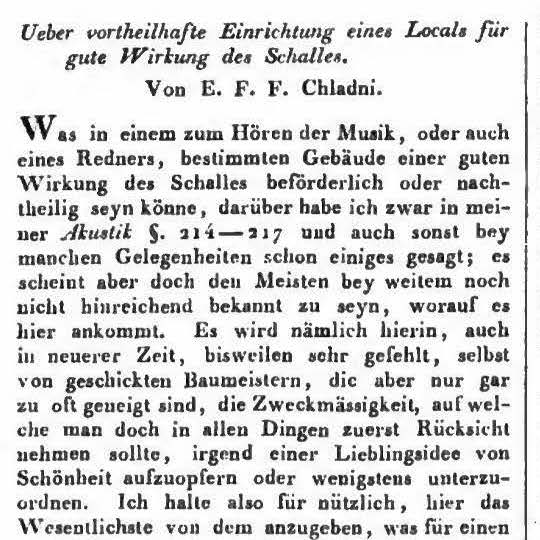
Ueber vortheilhafte Einrichtung eines Locals für gute Wirkung des Schalles Texts
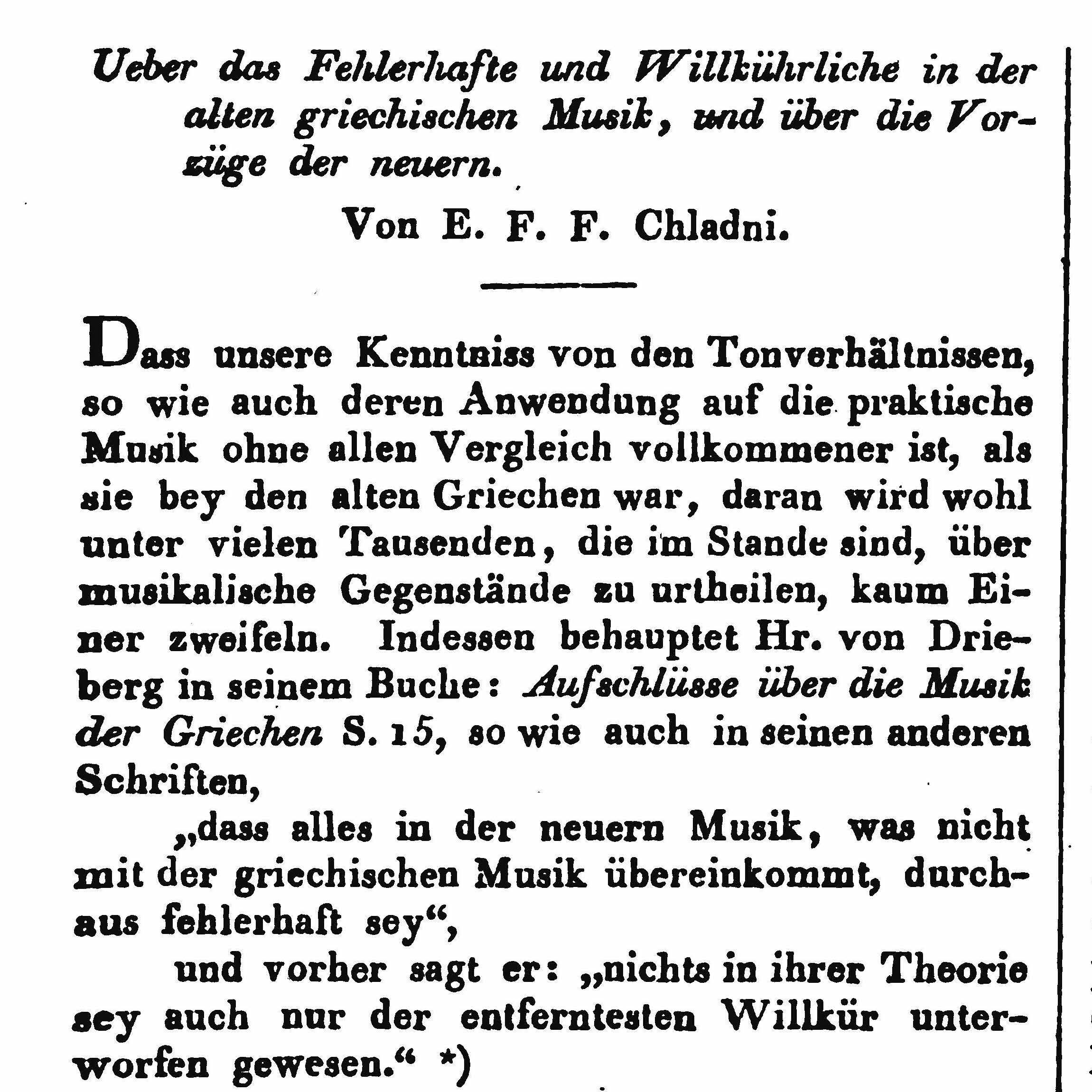
Ueber das Fehlerhafte und Willkührliche in der alten griechischen Musik Texts
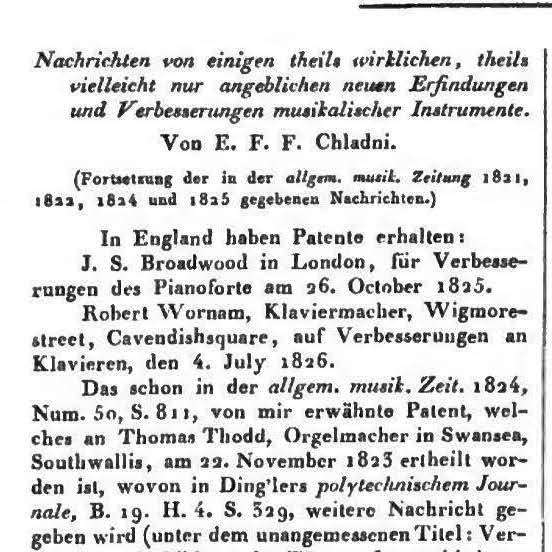
Nachrichten von einigen theils wirklichen, theils vielleicht nur angeblichen neuen Erfindungen Texts
Ernst Florens Friedrich Chladni
Chladni was a physicist whose work focused on experimental acoustics. He invented the “Chladni figure” and various instruments. Until his death, he continued to travel and present his inventions and findings to a wide audience.
Born in Wittenberg, Saxony, to a Hungarian-Slovak family, Chladni was obliged by his father to study law and philosophy in Wittenberg and Leipzig, where he obtained his law degree in 1782. It was only after his father’s death in 1782 that Chladni turned to physics, and specifically to experimental acoustics. Clearly driven by a strong interest in music, his first discovery, the Chladni figure, visualized the vibration of rigid surfaces with a sand pattern technique using a violin bow. In 1796, he described longitudinal waves in strings and batons, and he later worked on measuring the speed of sound passing through different gases.
Chladni never obtained a professorship at the University of Wittenberg, and instead made his living from inventing two keyboard instruments: the euphonium and later the clavicylinder. Traveling through Europe, he presented his vibrating plates and performed with his instruments to large audiences and met important personalities of the day, including Lichtenberg, Olbers, Laplace, and Goethe. It was Lichtenberg who intensified Chladni’s interest in meteorology and inspired his controversial thesis regarding the extraterrestrial origin of meteorites. Chladni died aged seventy on his travels, in what was then Breslau in the Kingdom of Prussia and today is the Polish city of Wrocław.
Due to his various studies and treatises, Chladni holds an important place in the history of acoustics. His observations are still applied in modern musical instrument design and construction.
© 2015 – 2025 Humboldt-Universität zu Berlin


